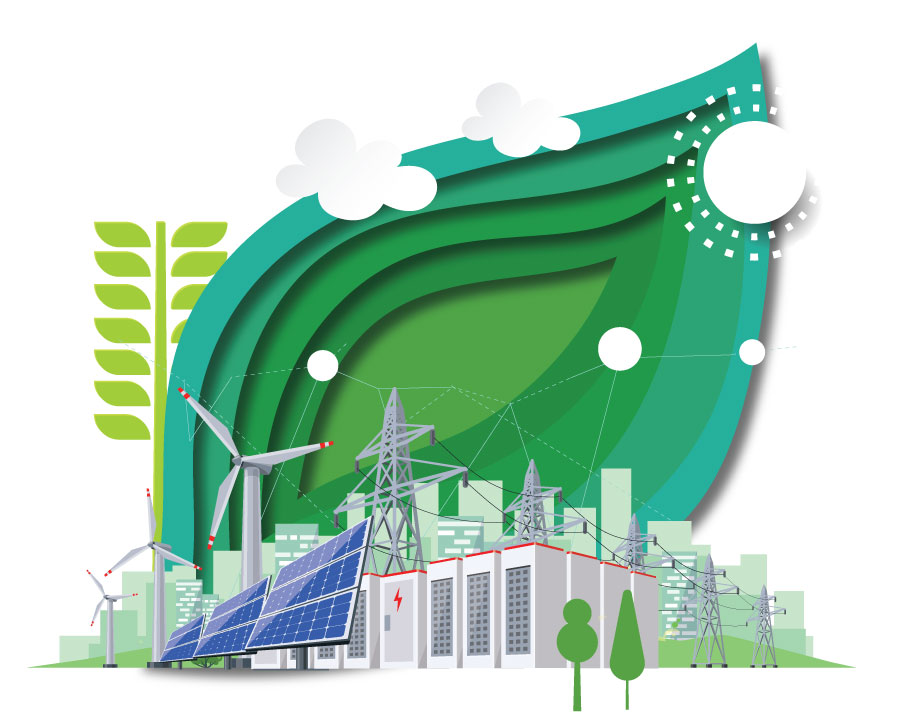Energy Blog: NREL Research Finds Electrification Vital to Decarbonization
Energy Blog: NREL Research Finds Electrification Vital to Decarbonization


Faster adoption of electric vehicles could help the United States achieve an upward of 80 percent reduction in transportation greenhouse gas emissions by 2050.
According to new research from the National Renewable Energy Laboratory (NREL), efforts to eliminate tailpipe emissions—with electric vehicles in particular—will be critical toward making significant decarbonization progress across the United States. About 28 percent of total U.S. greenhouse gas (GHG) emissions are currently generated by passenger and freight travel, according to NREL.
A flurry of initiatives have been announced within just the past six months, such as an October announcement by New York City Mayor Eric Adams and New York City Taxi and Limousine Commission (TLC) Commissioner David Do on the passage of the “Green Rides” rule, requiring the city’s rideshare fleet to be either zero-emission or wheelchair accessible by 2030. In August, the California Air Resources Board (CARB) and transportation nonprofit CALSTART launched Cal Fleet Advisor, which is a free assistance program to help owners and operators of medium- and heavy-duty vehicles and fleets make the transition to zero-emissions. And of course, earlier this year, the Biden Administration announced new private and public sector investments at the federal level, all to ensure 50 percent of all new vehicle sales will be electric by 2030.
Check Out This Infographic: Electric Vehicles Will Tank Emissions
Efforts like these that are encouraging the rapid adoption of zero-emission electric vehicles will play a significant role in decarbonization, as NREL researchers have found this way of reducing tailpipe emissions would allow the United States to achieve an 80 percent or more drop in transportation GHG emissions by 2050 over 2019 levels. These findings were outlined in “Exploring decarbonization pathways for USA passenger and freight mobility,” published in Nature Communications on October 30.
With the help of the Transportation Energy & Mobility Pathway Options (TEMPO) model, NREL scientists performed more than 2,000 simulations to determine what will be needed to decarbonize passenger and freight travel. Under its scope, the research explored changes in technology, behavior, and policies that would allow for passenger and freight systems to realistically decarbonize.
The results indicated there are plenty of ways to reach 80 percent or more well-to-wheel GHG reductions by 2050—and emphasize it's not just one solution that will be needed. But detailed analysis of 50 deep decarbonization scenarios showed that adoption of zero-emission vehicles along with a supporting clean electric grid “is essential for deep decarbonization.” The team’s median scenario predicts that zero-emission vehicle sales would reach 89 percent for passenger light-duty and 69 percent for freight trucks by 2030 and 100 percent sales for both by 2040.
Become a Member: How to Join ASME
It's also worth noting the researchers found that up to 3,000 terawatt-hours of electricity could be needed in 2050 to power this future massive fleet of electric vehicles across the country.
Although actually achieving these results will require more resources, planning, and programming at all levels, electrification is clearly taking root. According to Argonne National Laboratory, as of August 2023, more than 4.3 million plug-in hybrid and battery electric vehicles have been sold in the U.S. since 2010. That's compared to less than 200,000 cumulative sales a decade ago. The Energy Information Administration reported in September that hybrid, plug-in hybrid, and battery-electric vehicle sales in the second quarter of 2023 accounted for 16 percent of light-duty vehicle sales in the United States.
Manufacturers are also just offering fewer internal combustion engine models, according to EIA, with that number going from 318 to 297 between 2021 and 2023, compared to a jump in battery-electric models in the same time frame from 34 to 55.
As for infrastructure, the U.S. Department of Energy’s Alternative Fueling Station Locator notes that there are about 59,000 public electric charging stations across the United States, as of November 2023.
Beyond electrification and a sustainable grid, the researchers noted other strategies that will also contribute to significant decarbonization are increased use of public transit, better urban planning, low-carbon fuels such as biofuels and hydrogen, along with supportive policies at all government levels.
Louise Poirier is senior editor.






